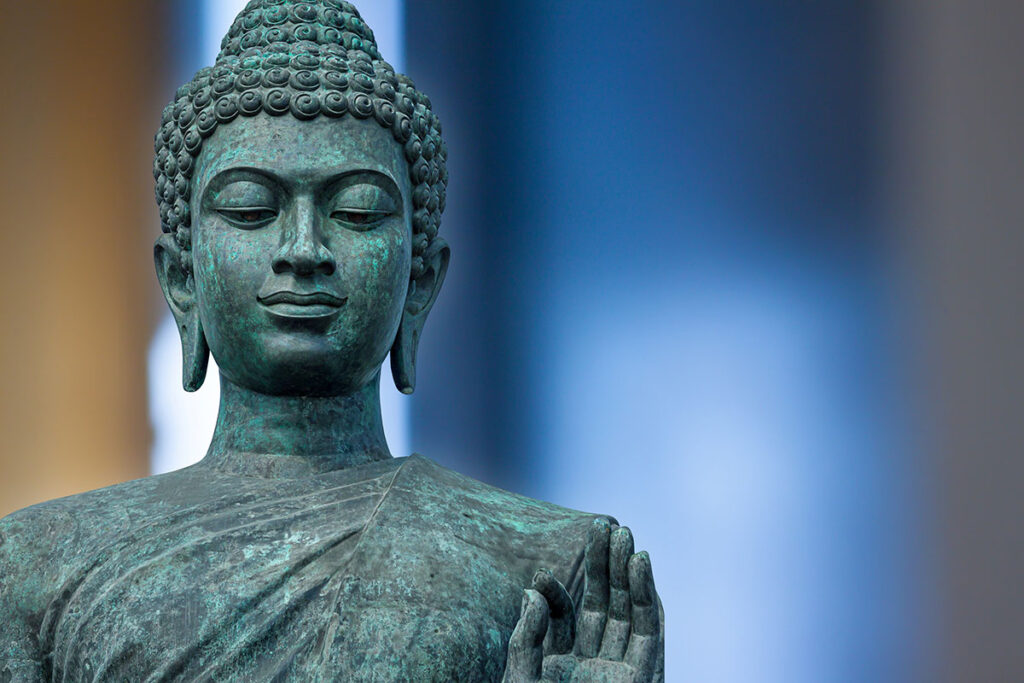Let me start this with I provide articles like this as part of my own study and exploration and as a way to share these ideas to support you on your journey if this topic is something you are interested in. I’ve been studying Buddhism for some 7 years but I am not an expert and if I share any ideas misguided, please share your thoughts with me and let’s discuss and I may rework thoughts provided here if/when I learn more. With that, let’s jump in…
Buddhism is one of the world’s oldest spiritual traditions, founded over 2,500 years ago by Siddhartha Gautama, known as the Buddha. With millions of practitioners worldwide, If you are new to Buddha’s story I might share two accessible items for your journey beyond what I share here. The first is Hermann Hesse’s book Siddhartha which is a great and popular novel telling the life story of Siddhartha Gautama (the actual man who is know as The Buddha).
The second this I will recommend is a great documentary called The Buddha. I’ll share a youtube video here but not sure if this will be around or available forever, but it is a great overview and documentary of the Buddha’s life and journey.
Buddhism offers profound insights into the nature of suffering, the mind, and the path to inner peace. This beginner’s guide introduces the fundamental teachings and practices of Buddhism.
Who Was the Buddha?
Siddhartha Gautama was a prince in ancient India who renounced his royal life in search of truth and enlightenment. Through deep meditation and insight, he awakened to the nature of existence, becoming the Buddha, or “the awakened one.” His teachings, known as the Dharma, form the foundation of Buddhism.
The Four Noble Truths
At the core of Buddhism are the Four Noble Truths and they are rumored to be one of the Buddha’s first teachings.
1. Dukkha (Suffering or Ill-Being):
Life contains suffering, dissatisfaction, and impermanence. Thich Nhat Hanh uses the term ill-being for the translation of Dukkha.
2. Samudaya (Cause of Suffering or the Making of Ill-Being):
Desire and attachment are the root causes of suffering. The path or wrong views and practices.
3. Nirodha (Cessation of Suffering/Ill-Being or Well-Being):
Liberation from suffering is possible by overcoming attachment. Thich Nhat Hanh uses well-being as the translation of Nirodha.
4. Marga (The Path to Liberation or Path Leading to Well-Being):
The Eightfold Path provides a way to end suffering and attain enlightenment or well-being.
The Noble Eightfold Path
The Buddha outlined a practical path to enlightenment through the Eightfold Path, which consists of eight different practices broken into 3 different categories (Wisdom, Morality, and Mediation). Here is a high-level overview…
Wisdom
1. Right View (Understanding the Four Noble Truths)
2. Right Thinking (Developing ethical and compassionate intentions)
Morality
3. Right Speech (Speaking truthfully and kindly)
4. Right Action (Living ethically and refraining from harm)
5. Right Livelihood (Engaging in work that aligns with Buddhist ethics)
Meditation
6. Right Effort (Cultivating wholesome states of mind)
7. Right Mindfulness (Being present and aware in daily life)
8. Right Concentration (Developing deep focus through meditation)
Key Concepts in Buddhism
Buddhists engage in various practices to cultivate wisdom and compassion, including:
- Meditation: Developing mindfulness, concentration, and insight.
- Ethical Living: Practicing non-harm, generosity, and compassion.
- Chanting and Rituals: Honoring the teachings and expressing devotion.
- Mindfulness in Daily Life: Bringing awareness and presence into everyday activities.
Schools of Buddhism
Over time, Buddhism has evolved into different traditions, including:
- Theravāda: Emphasizing monastic life and the earliest teachings.
- Mahayāna: Incorporating a broader range of scriptures, opening the teaching up to all people, and the ideal of the Bodhisattva.
- Vajrayāna (also known as Tibetan Buddhism): A more esoteric path, including the use of tantric practices, including mantras (sacred sounds), mudras (symbolic hand gestures), mandalas (spiritual diagrams), and the visualization of deities and Buddhas.
Conclusion
Buddhism is a practical and profound path to self-discovery and peace. Whether you seek wisdom, mindfulness, or a deeper understanding of life, the teachings of the Buddha offer timeless guidance. The journey begins with an open heart and a curious mind.
If you would like to deepen your understanding consider exploring Buddhist texts like the Heart Sutra or other Sutras, joining a meditation group like ours or click the link in the navigation to find a local sangha (plum village dirrectory), or visiting a local Buddhist temple.
I hope you found this beginer’s guide helpful as you start your journey or maybe found something new if you are already on the path and practicing. Anyhow, thank you for reading this and let me know if you have any questions or suggestions to improve this guide. Share your thoughts in the comments below and if you liked this info and know someone else that might enjoy it. Please share this article via social media or email. Thank you!

